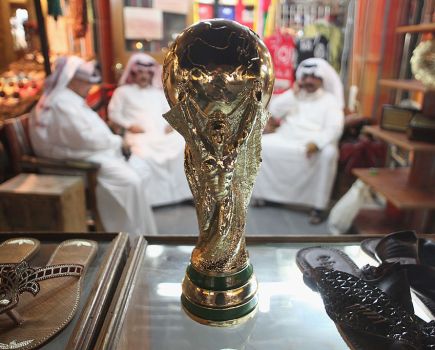Tabarez to stick with what he knows best
In the last World Cup, in every game that Uruguay played, they had less possession than the opposition but more shots. “As a team we want to be as we were in South Africa – difficult to play against,” says coach Tabarez. “I don’t aspire to anything else.”
This reveals much about Uruguay’s approach. There are few pretensions of midfield elaboration in the team. Instead, they will be happy to grind out results with 4-4-2, waiting patiently for space to open up into which they can then spring their dangerous strikers.
The Tabarez team has been noted for its tactical flexibility, for the capacity to adopt to different formations, sometimes with no changes in personnel. There has, however, been less of that over the last two years, although they did play a third centre-back away to Ecuador in October when the coach clearly felt that the altitude of Quito called for extra defensive cover. And, intriguingly, they used a back three in two friendlies against France – away in August 2012 and then at home the following June – keeping a clean sheet both times.
But while that variation is still in their locker, ever since a disastrous 4-0 defeat to Colombia in September 2012, Uruguay have stuck to a back four. With Christian Stuani and Cristian Rodriguez as specialist wide midfielders, it enables them to keep the defensive line close together and limit the space that the veteran defender Diego Lugano has to cover. Keeping things so compact has allowed Tabarez to drop one of his pair of central midfield markers, with Diego Perez giving way of late so that the more creative Nicolas Lodeiro can come in alongside Egidio Arevalo Rios, who is the leading midfield hit-man.
If fit, Luis Suarez will spend most of his time on the shoulder of the last defender, while Edinson Cavani, with his extraordinary capacity for hard work, will play the role of box-to-box striker, dropping deep when necessary to link the side together.
Diego Forlan, the hero of the last campaign, remains a dangerous and respected option on the bench.
Plan B?
Experiments with a back three are likely to remain on the backburner. One possible variation on the regular 4-4-2 framework is to bring on Forlan as a third striker in a 4-3-1-2, playing him in place of Lodeiro behind the main strike pair.
Costa Rica
Old style 4-4-2 for Jorge Luis Pinto
Costa Rica seem to have a very defined plan for Brazil 2014. Coach Jorge Luis Pinto looks set to play with a European-style 4-4-2, with Joel Campbelloperating as a pure number nine and Bryan Ruiz as the support striker. The “Ticos” have an interesting blend of vision and speed and will look to play to their strengths.
Pinto is a great admirer of Jose Mourinho’s tactical astuteness, so it’s little surprise that the Costa Rican game is based around defensive solidity, combined with swift counter-attacking. The approach has it’s critics but paid dividends in the final stage of CONCACAF qualifying – and will be essential in Brazil given the quality of their opposition.
There will be a lot of responsibity on the central midfielders Yeltsin Tejeda and Celso Borges to protect the back-four and to also stifle the creative skills of the likes of Pirlo, Rooney and Suarez.
A few doubts remain in the composition of the starting XI, the most important of which regards the recovery of Everton’s Bryan Oviedo, who was initially ruled out of the World Cup but now seems to be on schedule to make the pre-tournament training camp in San Jose, although his fitness still remains in some doubt.
Other than, that the starting XI seems to be set, and few surprises are expected in the 23-man squad. The core will be the same as the one that booked its ticket to Brazil eight months ago.
Plan B?
If Oviedo recovers his full fitness in time, a switch to a 5-4-1 is possible. This was used in the qualifiers on a number of occasions and would see an extra centre-back coming in, allowing the full-backs, particularly Oviedo, to push.
It would also involve Christian Bolanos switching to the left, where he would be dangerous cutting inside, and Bryan Ruiz or Joel Campbell dropping to the left side of midfield.
Alvaro Saborio could come in as the lone central striker, although Campbell’s form this season for Olympiakos should see him kept on in this role.








